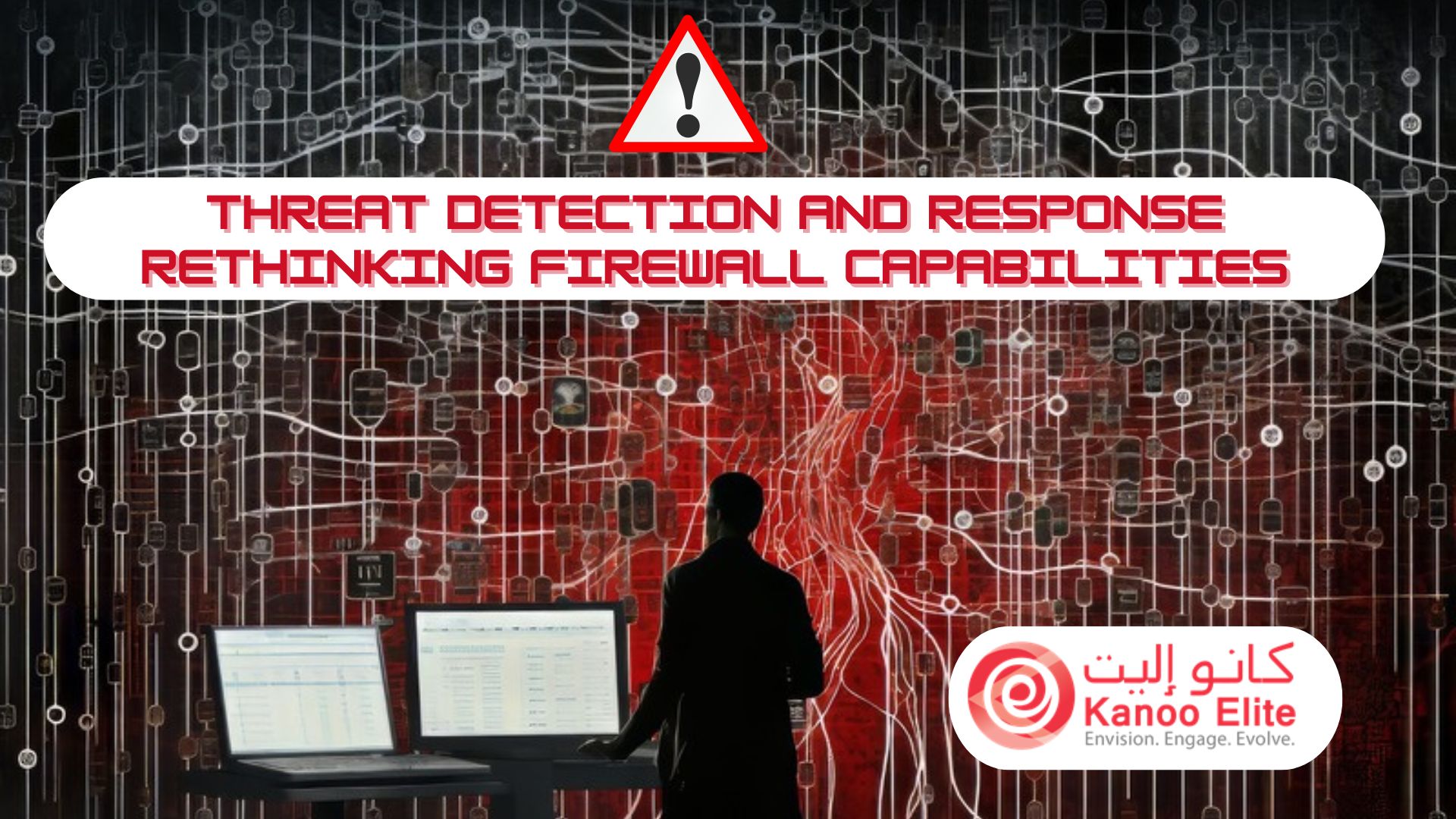Cyber threats are evolving faster than ever before. From ransomware and zero-day vulnerabilities to sophisticated supply chain attacks, organizations face a constant barrage of risks. At the frontline of this defense lies the firewall—once considered the ultimate gatekeeper of network security. But in an era defined by advanced threats and complex attack surfaces, traditional firewall capabilities are no longer enough. To effectively protect critical data and maintain business continuity, it’s time to rethink what a firewall can—and should—do.
The Changing Threat Landscape
In the early days of the internet, firewalls functioned as simple gatekeepers, blocking or allowing traffic based on static rules such as IP addresses and port numbers. The security perimeter was clearly defined, and most threats originated from outside the corporate network.
However, this landscape has fundamentally changed. Digital transformation, cloud adoption, remote work, and the proliferation of IoT devices have eroded the traditional network perimeter. Today, organizations are more distributed than ever, and so are their assets. Attackers exploit this expanded attack surface with targeted phishing, insider threats, lateral movement, and advanced persistent threats (APTs).
The result? Organizations can no longer rely on traditional, perimeter-focused firewalls alone. Security strategies must evolve from simple prevention to advanced threat detection and rapid response capabilities.
Limitations of Traditional Firewalls
Conventional firewalls were designed to block unauthorized access based on predefined rules. While they remain effective at enforcing basic access controls, they fall short in several critical areas:
- Limited Visibility: Traditional firewalls often lack deep visibility into encrypted traffic, application-layer data, and lateral movement within the network. Attackers can easily bypass them once inside.
- Static Rule-Based Controls: Relying on fixed rules means these firewalls are reactive rather than proactive. They can’t adapt to new threat patterns without manual intervention.
- Lack of Threat Intelligence Integration: Conventional firewalls generally operate without real-time threat intelligence feeds, leaving them blind to emerging global attack vectors.
- No Support for Automated Response: When a breach occurs, these firewalls do not offer automated mechanisms to isolate or remediate compromised segments, resulting in longer dwell times and greater potential damage.
In essence, while traditional firewalls serve as a critical first layer, they cannot shoulder the full burden of modern cyber defense.
Rethinking Firewall Capabilities
To address the modern threat landscape, organizations must rethink firewall capabilities, transforming them from static gatekeepers into dynamic security orchestrators capable of advanced threat detection and automated response.
Next-Generation Firewalls (NGFW)
Next-Generation Firewalls have emerged as the evolution of traditional firewalls. They offer:
- Application Awareness and Control: NGFWs can identify and control applications regardless of port or protocol, enabling more granular policy enforcement.
- Integrated Intrusion Prevention Systems (IPS): NGFWs can inspect traffic for known vulnerabilities and exploit signatures, providing an additional layer of protection.
- SSL/TLS Inspection: Modern firewalls can decrypt and inspect encrypted traffic, ensuring threats don’t hide in encrypted tunnels.
- User Identity Integration: By integrating with identity management systems, NGFWs enforce policies based on user roles rather than just IP addresses.
Advanced Threat Detection
Beyond NGFW capabilities, advanced firewalls integrate threat detection systems that use machine learning and behavioral analysis to identify anomalies. Instead of relying solely on signature-based detection, these firewalls learn normal network behavior and flag deviations that might indicate compromise. This proactive approach improves the chances of detecting sophisticated attacks early.
Automated Response
Speed is critical in cybersecurity. Advanced firewalls can be configured to take immediate action when a threat is detected—quarantining affected devices, blocking malicious IP addresses, or reconfiguring policies in real-time. Automated response not only reduces the time to containment but also mitigates human error and resource constraints.
Cloud Integration and Zero Trust
The modern firewall must support hybrid and multi-cloud environments. Traditional on-premises-only solutions are insufficient in a world where applications, data, and users are everywhere. Newer firewalls integrate with cloud-native security frameworks and support Zero Trust Network Access (ZTNA) models, verifying every request as though it originates from an open network.
The Role of Threat Intelligence
An essential component of rethinking firewall capabilities is the integration of threat intelligence. By ingesting real-time intelligence feeds, firewalls can update their detection and prevention mechanisms to counter newly discovered threats globally.
For example, if a certain IP range is associated with a new botnet campaign, the firewall can automatically block traffic from these addresses without waiting for manual updates. Similarly, integrating with security information and event management (SIEM) platforms and extended detection and response (XDR) solutions enables coordinated responses across the security ecosystem.
Moving Beyond Prevention to Detection and Response
Historically, firewalls have been viewed primarily as prevention tools. While prevention remains vital, the reality is that no system is 100% breach-proof. Cybersecurity experts widely agree that it’s not a matter of if an organization will be breached, but when.
Thus, modern firewalls must balance prevention with robust detection and response capabilities. By continuously monitoring network activity, correlating logs, and integrating with endpoint detection and response (EDR) solutions, firewalls can help identify breaches faster and facilitate immediate remediation.
Benefits of a Modernized Firewall Approach
By rethinking firewall capabilities and adopting a detection and response-focused approach, organizations gain:
- Reduced Dwell Time: The time attackers spend undetected inside the network is significantly shortened, reducing potential damage.
- Improved Visibility: Comprehensive insight into traffic, applications, and user behavior allows for more effective security measures.
- Stronger Compliance: Many regulatory standards now require continuous monitoring and incident response capabilities, which modern firewalls help fulfill.
- Greater Operational Efficiency: Automated response reduces the workload on already stretched security teams and minimizes manual intervention.
- Future-Proof Security: As threats evolve, adaptive firewalls can incorporate new defense mechanisms, protecting investments over the long term.
Challenges and Considerations
Of course, rethinking firewall capabilities is not without challenges. Implementing next-gen firewalls and advanced detection systems often requires significant investment, both financially and in terms of skilled resources. Organizations must:
- Ensure Proper Configuration: Misconfigured firewalls can introduce vulnerabilities rather than mitigate them.
- Invest in Skilled Staff: Advanced features require skilled security analysts and administrators to operate effectively.
- Integrate with Existing Tools: Firewalls must work seamlessly with other security solutions such as SIEM, EDR, and identity access management systems.
- Maintain Privacy and Compliance: SSL inspection, for instance, may introduce privacy concerns if not properly managed.
Looking Ahead
As cyber threats continue to evolve, the role of firewalls will keep expanding beyond simple access control. Future innovations may include even deeper integrations with AI-driven analytics, proactive deception technologies (such as honeypots embedded in firewall architectures), and enhanced micro-segmentation for zero trust.
Security leaders should view firewalls not as standalone security appliances but as critical components in an interconnected, layered defense strategy that prioritizes detection, response, and resilience.
Conclusion
Traditional firewalls laid the foundation for network security, but they are no longer sufficient in isolation. Modern organizations require firewalls capable of advanced threat detection, real-time automated response, and integration with broader security ecosystems.
Rethinking firewall capabilities is no longer optional—it is a necessity. By embracing next-generation technologies and shifting from a prevention-only mindset to a comprehensive detection and response approach, businesses can stay ahead of adversaries, protect critical data, and ensure operational continuity in an increasingly hostile cyber environment.



